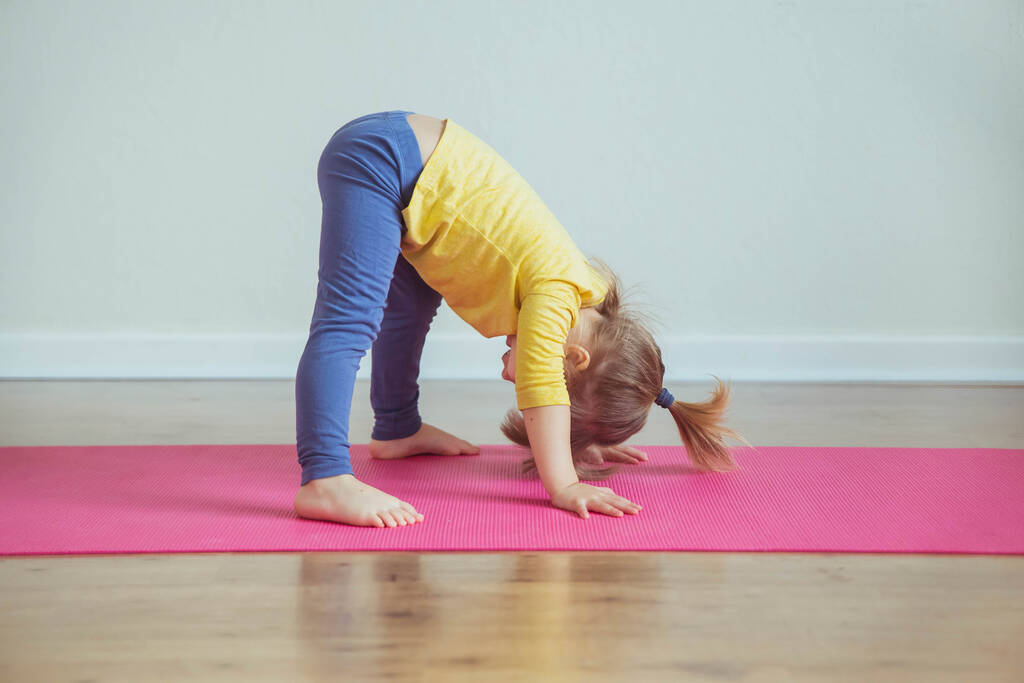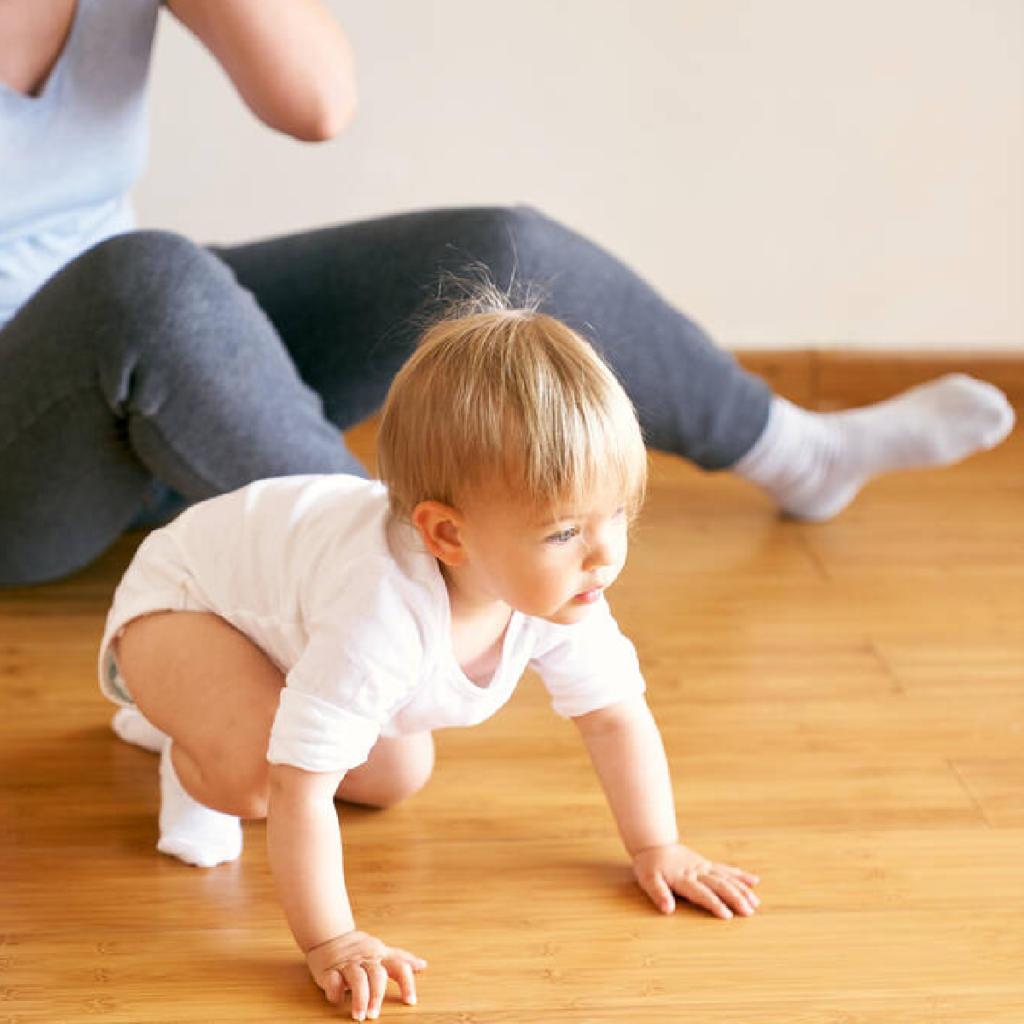Discover a comprehensive step-by-step guide on teaching physical fitness to 2-3 year old children.
Teaching Physical Fitness to 2-3 Year Old Children: A Step-by-Step Guide
Teaching physical fitness to 2-3 year old children can be a fun and rewarding experience for both parents and toddlers. However, it is important to approach this task with care and understanding of the unique needs and capabilities of young children. In this step-by-step guide, we will explore the importance of physical fitness in early childhood, how to establish a safe and fun fitness environment, creating a balanced fitness routine, engaging your child in physical activities, and monitoring their progress. So, let’s get started!

Understanding the Importance of Physical Fitness in Early Childhood
Physical fitness is not only important for adults but also for young children. Engaging in regular physical activity has numerous benefits for their overall development. It promotes healthy growth, improves motor skills, enhances cognitive abilities, and contributes to the development of social and emotional skills.
Children who engage in regular physical activity are more likely to have better concentration, self-esteem, and sleep patterns. Additionally, physical fitness helps prevent obesity and lowers the risk of various health conditions later in life. Therefore, introducing physical fitness to toddlers at an early age sets a solid foundation for a healthy lifestyle.
The Role of Physical Activity in Child Development
Physical activity plays a crucial role in the overall development of young children. It helps them develop their gross motor skills, such as running, jumping, and balancing. These skills, in turn, support their ability to participate in sports and other physical activities as they grow.
Moreover, physical activity provides an opportunity for children to explore their surroundings and engage with the environment. Whether it’s climbing on playground equipment or playing catch with friends, these activities encourage curiosity, exploration, and a sense of adventure.
In addition to physical development, regular exercise also contributes to the cognitive and emotional development of toddlers. Physical activity stimulates brain function, improves memory, and enhances problem-solving skills. It also promotes social interactions and cooperation among children, fostering the development of important social skills.
Health Benefits of Regular Exercise for Toddlers
Engaging in regular exercise brings numerous health benefits to toddlers. It strengthens their muscles and bones, improves cardiovascular health, and enhances flexibility and coordination. Physical activity also helps regulate weight and promotes a healthy body composition.
Furthermore, regular exercise boosts the immune system, reducing the risk of common illnesses. It also helps improve sleep quality, ensuring that toddlers get the rest they need for their overall well-being. With all these benefits, it’s clear that physical fitness is essential for the healthy development of 2-3 year old children.
Moreover, physical fitness in early childhood sets the stage for a lifetime of healthy habits. When children are introduced to regular physical activity at a young age, they are more likely to continue engaging in exercise as they grow older. This can have long-term benefits for their overall health and well-being.
Additionally, physical fitness can also have a positive impact on a child’s mental health. Exercise releases endorphins, which are known as “feel-good” hormones. These hormones help reduce stress, anxiety, and depression, promoting a positive mindset and emotional well-being.
Furthermore, physical activity provides an outlet for children to release pent-up energy and emotions. It can serve as a form of self-expression and a way to manage and cope with emotions. This can be particularly beneficial for toddlers who may not have developed strong verbal communication skills yet.
In conclusion, physical fitness is not just about staying active and maintaining a healthy weight. It plays a crucial role in the overall development of young children, promoting physical, cognitive, and emotional well-being. By introducing physical activity to toddlers at an early age, we are setting them up for a lifetime of health and happiness.
Establishing a Safe and Fun Fitness Environment
Creating a safe environment for your toddler’s fitness routine is crucial to prevent injuries and ensure a positive experience. Here are some tips to help you establish a safe and fun fitness environment:
When it comes to your toddler’s physical activities, it’s important to choose ones that are not only safe but also age-appropriate and engaging. Consider their age, physical abilities, and interests when selecting activities. For toddlers, activities like crawling, rolling, dancing, and playing with balls are excellent options. These activities not only keep them active but also promote motor skills development.
In addition to choosing age-appropriate activities, it’s important to provide a variety of exercises that target different domains of physical fitness. This includes cardiovascular endurance, strength, flexibility, and balance. By incorporating a mix of activities, you can ensure a well-rounded fitness routine that supports your toddler’s overall development.
Safety Measures to Consider During Exercise
While engaging in physical activities, safety should always be a top priority. To create a safe environment, start by making sure the exercise area is free from hazards. Remove any sharp objects or unstable furniture that could pose a risk to your toddler. It’s also important to use age-appropriate equipment and ensure it is in good condition and properly maintained.
As a parent, it’s crucial to supervise your toddler closely during exercise to prevent accidents and ensure they are using proper form. This not only helps prevent injuries but also allows you to provide guidance and support. Encourage your toddler to warm up before exercise and cool down afterward to reduce the risk of injuries and promote muscle recovery.
In addition to safety measures, it’s important to consider your toddler’s comfort during exercise. Dress them in comfortable and breathable clothing that allows for freedom of movement. This will help them stay focused and enjoy their fitness routine. Don’t forget to provide them with plenty of water to stay hydrated throughout the activity.
By following these tips, you can create a safe and fun fitness environment for your toddler. Remember to always prioritize their safety and enjoyment, and adjust the activities as they grow and develop.
Creating a Balanced Fitness Routine for Your Toddler
To ensure that your toddler’s fitness routine is effective and enjoyable, it is important to create a balanced approach. Here are some strategies to help you achieve that:
Incorporating Different Types of Exercise
Include a variety of exercises that target different muscle groups and skills. This can include activities like running, jumping, climbing, kicking, and stretching. By incorporating different types of exercise, you can keep your toddler engaged and stimulate their overall physical development.
Remember to balance high-intensity activities with low-intensity activities to provide a well-rounded fitness routine. For example, you can alternate between active play and calming yoga exercises to ensure a balance between energy expenditure and relaxation.
In addition to these activities, you can also introduce your toddler to swimming, which is a great way to build strength and coordination while having fun in the water. Swimming can help improve cardiovascular health and promote overall fitness.
Another fun and engaging activity to consider is cycling. You can take your toddler on short bike rides in a safe and controlled environment, such as a park or a quiet neighborhood. Cycling helps develop leg muscles and improves balance and coordination.
Setting a Consistent Exercise Schedule
Consistency is key when it comes to physical fitness. Set a regular exercise schedule for your toddler and stick to it. This helps establish healthy habits and ensures that physical activity becomes a natural part of their daily routine.
Keep exercise sessions short and age-appropriate. Toddlers might have shorter attention spans, so aim for multiple short sessions throughout the day rather than one long session. This way, you can maintain their engagement and prevent them from getting bored or restless.
In addition to a consistent exercise schedule, it is important to provide your toddler with ample opportunities for unstructured play. Unstructured play allows them to explore their environment, use their imagination, and engage in physical activities of their choice. This can include activities like building with blocks, playing with balls, or even dancing to their favorite music.
Furthermore, incorporating outdoor play into your toddler’s fitness routine can have numerous benefits. Outdoor play exposes them to fresh air, sunlight, and nature, which can boost their mood, improve sleep patterns, and enhance overall well-being. Take your toddler to the park, playground, or backyard to engage in activities like running, jumping, and playing catch.
Lastly, remember to lead by example. Your toddler is more likely to embrace a fitness routine if they see you actively participating in physical activities. Make exercise a family affair by going for walks together, playing sports, or even doing simple exercises at home. This not only promotes a healthy lifestyle but also strengthens the bond between you and your child.
Engaging Your Child in Physical Activities
To make physical fitness enjoyable for your toddler, it’s important to engage them in activities that they find fun and exciting. Here are some strategies to get them moving:
Making Fitness Fun: Games and Play-Based Exercises
Transform physical fitness into a playful experience by incorporating games and play-based exercises. Play games like “Simon Says,” “Duck Duck Goose,” or create an obstacle course using pillows, cushions, and toys. These activities not only keep your toddler active but also encourage them to develop important motor skills and coordination.
Use playful cues and positive reinforcement to motivate your toddler during exercise. Cheer them on, offer praise for their effort, and celebrate their achievements. This helps create a positive association with physical fitness and encourages them to continue their active lifestyle.
Encouraging Active Participation and Effort
Encourage active participation by engaging with your toddler during exercise. Join them in their activities, mimic their movements, and make it a bonding experience. This not only motivates your toddler but also strengthens the parent-child connection.
Acknowledge and appreciate their effort rather than focusing solely on the outcome. Encourage them to explore their physical abilities, try new activities, and challenge themselves. Remember, the goal is not perfection but rather the enjoyment of physical activity.
Monitoring Your Child’s Progress and Adjusting the Routine
As your toddler grows and develops, it’s important to monitor their progress and adjust their fitness routine accordingly. Here’s how you can do that:

Observing Changes in Your Child’s Physical Capabilities
Pay attention to how your child’s physical abilities evolve over time. Notice improvements in their motor skills, endurance, and strength. Observe their coordination and balance during various activities.
Keep a record of their accomplishments and milestones. This will help you track their progress and make informed decisions when adjusting their fitness routine. Celebrate their achievements and encourage them to set new goals as they continue to grow and develop.
Modifying the Fitness Routine as Your Child Grows
As your child grows older, their physical capabilities and interests will change. Modify the fitness routine to accommodate their developing skills and preferences. Introduce new activities that challenge them at their current level.
Gradually increase the duration and intensity of exercises to match their growing abilities. However, always prioritize their safety and well-being. If your toddler shows signs of fatigue or discomfort, allow them to rest and adjust the routine accordingly.
Teaching physical fitness to 2-3 year old children is an exciting journey that lays the foundation for a healthy and active lifestyle. By understanding the importance of physical fitness, establishing a safe and enjoyable fitness environment, creating a balanced fitness routine, engaging your child in physical activities, and monitoring their progress, you can foster a love for exercise in your toddler that will benefit them for years to come. So, let’s embark on this journey together, one step at a time!



